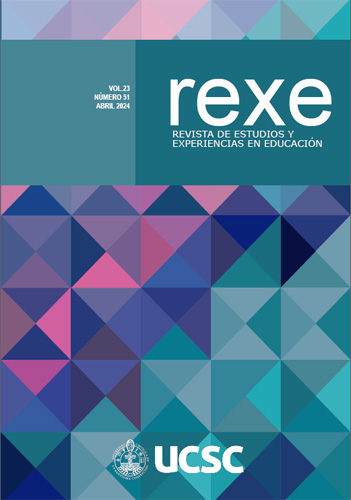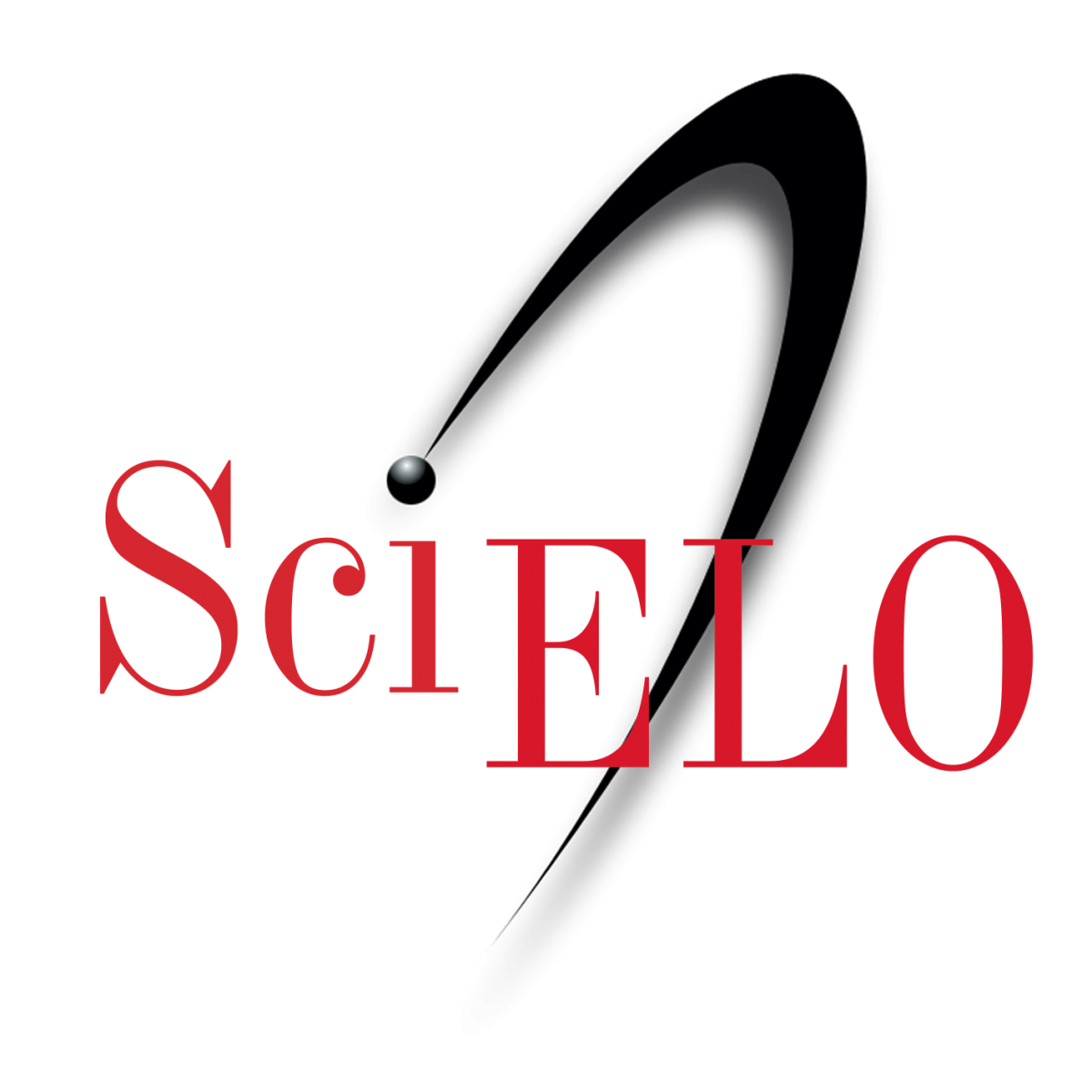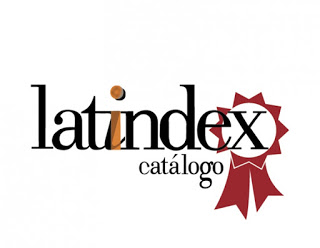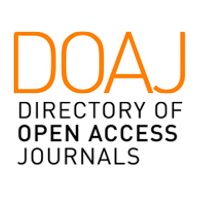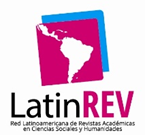Image, matter and object: a pedagogical experience around the didactic-object for the construction of learning spaces in primary school
DOI:
https://doi.org/10.21703/rexe.v23i51.2170Keywords:
arte, dispositivo, didáctica, aprendizaje, primariaAbstract
This article brings to the forefront a pedagogical experience developed through the Project Based Learning (PBL) methodology based on teaching practice with students in the subject of Visual and Plastic Education, in the second year of the Primary Education degree at the Faculty of Education of the University of Zaragoza. The aim of this project, which is part of the subject syllabus, was to learn about the didactic function of objects from their materiality as generators of knowledge in the understanding of complex phenomena. All of this, based on the current debates on the materiality of images, on the existing epistemological crossings that make up the current state of research into images; thus, this proposal explores the conceptual limits in the sense in which objects can be generators of knowledge from their own forms of appearing and in the direct confrontation between the object and the spectator, through the manipulation of the latter. From the findings obtained, it is concluded that the construction of objects for the acquisition of knowledge is ideal for the improvement of integrated and globalised learning, a current requirement of educational laws such as LOMLOE, forming a pedagogical scenario where the accent is placed on a renewed attention to images and their cognitive possibilities.
Downloads
References
Acaso, M. (13 de septiembre de 2017). Art Thinking, Educación artística, Educación disruptiva. Obtenido de Del libro de texto al vídeo de sexto. Las prácticas artísticas contemporáneas como detonantes de la inversión de roles en la producción de recursos educativos en la educación primaria: https://mariaacaso.es/educacion-disruptiva/del-libro-texto-al-video-sexto-las-practicas-artisticas-contemporaneas-detonantes-la-inversion-roles-la-produccion-recursos-educativos-la-educacion-primaria/
Acaso, M., y Megías, C. (2017). Art Thinking. Cómo el arte puede transformar la educación. Barcelona: Paidós Educación.
Argás, P. (2010). Los proyectos de trabajo en el aula. Reflexiones y experiencias prácticas. Graó Laboratorio Educativo.
Arraiz, A., Sabirón, F., Cortés, A., Buenos, C., Escudero, T., y Berbegal, A. (2007). El portafolio-etnográfico: un instrumento para la evaluación de competencias. Prensas Universitarias de Zaragoza.
Ballester, A. (2002). El aprendizaje significativo en la práctica. Cómo hacer que el aprendizaje sea significativo en el aula. Seminario de aprendizaje significativo. https://eduteka.icesi.edu.co/pdfdir/ElAprendizajeSignificativoEnLaPractica.pdf
Bredekamp, H. (2015). Teoría del acto icónico. Akal.
Boehm, H.P. (1994) Some Aspects of the Surface Chemistry of Carbon Blacks and Other Carbons. Carbon, 32, 759- 769. http://dx.doi.org/10.1016/0008-6223(94)90031-0
De Miguel, M. (2005). Modalidades de enseñanza centradas en el desarrollo de competencias. Orientaciones para promover el cambio metodológico en el Espacio Europeo de Educación Superior. Universidad de Oviedo.
Delors, J. (1996). Los cuatro pilares de la educación. En J. Delors, La Educación encierra un tesoro. UNESCO.
Dewey, J. (1949). El arte como experiencia. Fondo de Cultura Económica.
Díaz, F., y Hernández, G. (2002). Estrategias docentes para un aprendizaje significativo. Una interpretación constructivista. México: Mc Graw Hill .
Dickinson, K., Soukamneuth, S., Yu, H., Kimball, M., D'Amico, R., Perry, R., y Curan, S. (1998). Technical assistance guide: Providing educational services in the Summer Youth Employment and Training Program. Department of Labor.
Dikovitskaya, M. (2006): Visual Culture: The Study of the Visual after the Cultural Turn. The MIT Press.
Educagob. (13 de junio de 2023). Obtenido de Situaciones de aprendizaje: https://educagob.educacionyfp.gob.es/curriculo/curriculo-lomloe/menu-curriculos-basicos/bachillerato/situaciones-aprendizaje.html
English, M. C., y Kitsantas, A. (2013). Supporting Student Self-Regulated Learning in Problem- and Project-Based Learning. Interdisciplinary Journal of Problem-based Learning, 128-150.
Elkins, J (2003). Visual Studies: A Skeptical Introduction. Routledge.
Elkins, J. (2008): “On Some Limits of Materiality in Art History,” 31: Das Magazin des Instituts für Theorie. Zürich, 12, 25–30.
Fernández March, A. (2006). Metodologías activas para la formación de competencias. Educatio Siglo XXI, 24, 35–56. https://revistas.um.es/educatio/article/view/152
Foucault, M. (2003). Vigilar y castigar. El nacimiento de la prisión. Siglo XXI.
García, C. E. (2006). Cómo elaborar un proyecto cultural. México: Consejo Nacional para la Cultura y las Artes.
García Varas, A. (2013) Imágenes con poder: representaciones de la guerra. Referencia, sentidos y actos de imagen. Enrahonar: an international journal of theoretical and practical reason, 50, 11-29.
Gell, A. (1998). Art and agency: an anthropological theory. Oxford University Press.
Boehm, B. (1994). Was ist ein Bild?, Wilhelm Fink Verlag, Munich.
Greenleaf, P. (2007). Preferiría estar aprendiendo: Como los exámenes estandarizados atrasan el aprendizaje y lo que podemos hacer. Lulu Press, Inc.
Gude, O. (2013). New School Art Styles: The Project of Art Education. Art Education. The Journal of the National Art Education Association, 6–15.
Gumbrecht, H.U. (2004). Production of presence: What Meaning Cannot Convey. Standford University Press.
Ingold, T. (2007). “Materials against Materiality”, Archeological Dialogues, 14 (1), 1-16.
Ingold, T. (2010). “Bringing Things to Life: creative Entanglements in a World of Materials”, Working Paper-15, Realities, ESRC National Centre for Research Methods: 1-14.
Ingold, T. (2013). Making. Routledge, London.
Katz, L. G., y Chard, S. C. (2000). Engaging children’s minds: The project approach (2ª ed.). Stamford: CT: Ablex.
Klein, J., Taveras, S., King, E. D., Commitante, A., Curtis-Bey, L., & Stripling, B. (2009). Project-Based Learning: Inspiring Middle School Students to Engage in Deep and Active Learning. Nueva York: NYC Department of Education.
Kolodner, J. L., Camp, P. J., Crismond, D., Fasse, B., Gray, J., y Holbrook, J. (2003). Problem-based learning meets case-based reasoning in the middle-school science classroom: Putting Learning by Design into practice. Journal of the Learning Sciences, 495- 547.
Martin, N., y Baker, A. (2000). Linking work and learning toolkit. Portland: OR: Northwest Regional Educational.
Mauri, T. (1995). ¿Qué hace que el alumno y la alumna aprendan los contenidos escolares? La naturaleza activa y constructivista del conocimiento. En El constructivismo en el aula (3ª ed., pp. 65-99). Barcelona: Editorial Graó, de Serveis Pedagògics.
Medina-Nicolalde, M., y Tapia-Calvopiña, M. (2017). El aprendizaje basado en problemas, una estrategia para el trabajo interdisciplinario en el aula. OLIMPIA. Revista de la Facultad de Cultura Física de la Universidad de Granma, 14(46), 142-153.
Mitchell, W.J.T. (2010). ¿Qué quieren las imágenes? Sans Soleil.
Moreira, M. (2000). Aprendiaje significativo: teoría y práctica. Aprendizaje Visor.
Morín, E. (2007). "Complexité restreinte, complexité générale", en Intelligence de la complexité. Épistémologie et pragmatique. Éditions de l'Aube: 28-64.
Moxey, K. (2015). El tiempo de lo visual: la imagen en la historia. Sans Soleil.
Murillo, V. y Revilla, A. (2020). La educación artística a través de las ciudades de Gerhard Richter. Arte y políticas de identidad, 22, 89-116.
Murillo-Ligorred, V. y Ramos-Vallecillo, N. (2023). Transdisciplinariedad entre arte, ciencia y tecnología: superación de fronteras en las propuestas didáctico-expositivas de Karin Ohlenschläger en su etapa como directora de LABoral Gijón. Artnodes 32.
Nisbet, J., y Shuckmith, J. (1980). Estrategias de aprendizaje. Santillana.
Peeck, J., Van Den Bosch, A. B., y Kruepeling, W. (1982). The effect of mobilizing prior knowledge on learning from text. Journal of Educational Psychology, 74, 771–777.
Peralta Lara, D. C., y Guamán Gómez, V. J. (2020). Metodologías activas para la enseñanza y aprendizaje de los estudios sociales. Sociedad &Amp; Tecnología, 3(2), 2–10. https://doi.org/10.51247/st.v3i2.62
Perera, F. (2008). Proceso de enseñanza-aprendizaje. Interdisciplinariedad o integración. Varona 48-49/2009 43-39
Ramos-Vallecillo, N. (2020). La evaluación competencial en el Proyecto Artístico. Un estudio de caso en secundaria. DEDiCA Revista De Educação E Humanidades (dreh), (17), 361–376. https://doi.org/10.30827/dreh.v0i17.15625
Ramos-Vallecillo, N. (2022). Art Thinking en la Etapa de Educación infantil: hacer aprendiendo y aprender haciendo. Tercio Creciente, 91–99.
Rancière, J. (2010). El espectador emancipado. Ellago.
Rodríguez-Sandoval, E., Vargas-Solano, E., y Luna-Cortes, J. (2010). Evaluación de la estrategia “aprendizaje basado en proyectos”. Educación y educadores, 13(1), 13-25.
Ruiz-Martín, H. (2020). ¿Cómo aprendemos?: una aproximación científica al aprendizaje y la enseñanza, Graó.
Sachs-Hombach, K. (2003). Das Bild als kommunikatives Medium. Elemente einer allgemeinen Bildwissenschaft. Herbert von Halem Verlag.
Sánchez, J. (3 de mayo de 2013). Qué dicen los estudios sobre el Aprendizaje Basado en Proyectos. actualidadpedagogica.com: http://actualidadpedagogica.com/estudios_abp/
Silva, J., y Maturana, D. (2017). Una propuesta de modelo para introducir metodologías activas en educación superior. Innovación Educativa, 17(73),117-131. https://www.redalyc.org/articulo.oa?id=179450594006
Soto Calderón, A. (2020). La performatividad de las imágenes. Metales pesados.
Thomas, J. W. (2000). A review of research on project-based learning. California: The Autodesk Foundation.
Van Eck, C. (2015a): Art, Agency and Living Presence: From the Animated Image to the Excessive Object. Leiden, München: Leiden University Press, De Gruyter.
Van Eck, C. (2015b): “ArtWorks that Refuse to Behave: Agency, Excess and Material Presence in Canova and Manet” New Literary History, 46, 409-34.
Van Eck, C., Versluys, M.J., y Ter Keurs, P. (2015): “The biography of cultures: style, objects and agency. Proposal for an interdisciplinary approach”, en Cahiers de l’École du Louvre. Recherches en histoire de l’art, histoire des civilisations, archéologie, anthropologie et muséologie, 7: 2-22.
Vergara, C. (2022). cristina vergara _ design. https://www.cristinavergara.com/portfolio-items/sobre/
Zabala, A. (1995). Los enfoques didácticos. En El constructivismo en el aula (3ª ed., pp. 125-161). Editorial Graó, de Serveis Pedagògics.
Downloads
Published
Issue
Section
License
Open Access Policy
This journal provides immediate open access to its content, based on the principle that offering the public free access to research fosters greater global knowledge exchange.
License
The REXE Journal, “Journal of Studies and Experiences in Education,” published by the Faculty of Education at the Universidad Católica de la Santísima Concepción, is distributed under a License. Creative Commons Atribución 4.0 Internacional.
